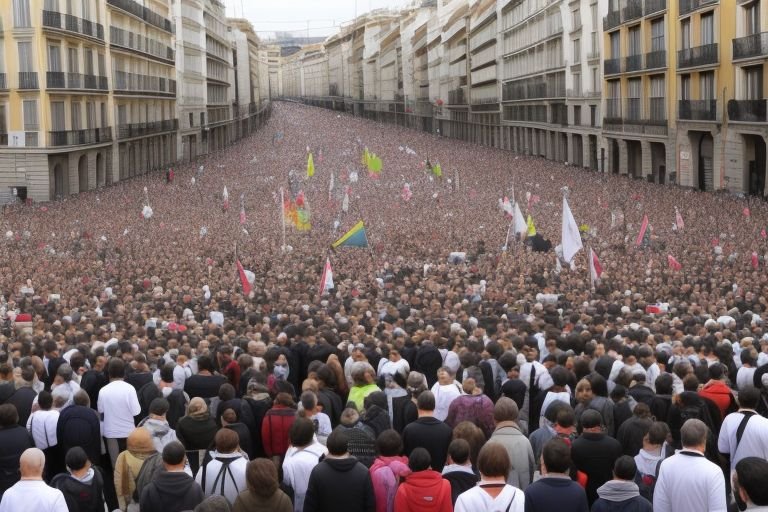Spain’s colourful capital city of Madrid has a rising tourism problem, and the residents began to voice their concerns about the crowds and high prices for homes last Sunday. The protest which involved more than 12,000 people shows the growing conflict between the increasingly popular tourist attraction and the residents of Sydney.
The protest, organized under the slogan “Housing is a right, not a business,” saw residents from various neighborhoods converge in the city center, demanding immediate action from local and national authorities. The protesters held placards and recited chants they demanded the Spanish capital government to approve more stringent laws on home-sharing businesses and develop ways of taming the rising cost of living.
For many years, Madrid steadily increased in popularity as a tourist choice, which manifested itself in its overtaking Barcelona in the summer of 2024 as the Spanish city most visited. While this has created more revenue, more and more people from the community face hardships paying a good amount of money, which makes them live in close proximity to where they work.
The protest is set to occur after the Spanish government put new rules into practise in July of this year to protect the market share for long term letting and stop homeowners from turning homes into short term holiday lettings. However, many residents say that those measures have not proved to be effective enough in dealing with the causes of housing market problems.
One of the protest organizers, María Rodríguez, is a 35-year-old lady who has lived in Madrid all her life, and she said the following. “We’re not against tourism, but we need a balance,” she said. “Our city is losing its soul, and we’re being forced out of our homes because we can’t afford the rent anymore.”
One major social effect of tourism on Madrid’s housing sector has been felt in several areas which are probably some of the city’s most famous areas – Malasaña and La Latina where whole apartments are turned into holiday rentals. In addition, this trend has not only affected the number of long-term housing stock available, but has also turned these purely residential areas into tourism centres.
Small businesses operating in the region have not emerged from this change unscathed. Another local, José Martínez, who owns a small grocery store in the Lavapiés neighborhood, regretted many transformations over the last several years. “My regular customers are disappearing,” he said. “They’re being replaced by tourists who only stay for a few days and don’t contribute to the local community in the same way.”
The city authorities have described the protesters’ grievances and have vowed for further crackdown measures to counter the housing emergency. Madrid’s Mayor, during a press briefing after the protest, said that a new tactic is being considered to control SRE market and improve access to homes that are more affordable.
But it will be extremely difficult to work out an equilibrium that would satisfy both parties – the residents and the commercial tourist market. Most especially, tourism as an industry has grown to be an important part of Madrid through its contribution to the creation of employment opportunities and business establishment. The city’s fine arts-related museums, tourist attractions, and the City’s scenic look still retain an appeal for millions of guests every year.
If these competing stakeholders are to be believed, Madrid will continue to emerge as a flash point for the struggle to define sustainable tourism and urban growth. The protest has acted as an eye opener to city plannists and policy makers to take note of the tourist boom and try to eradicate the negative impact of the excesses of tourism.
Given that all the tourist traffic is channelled through Madrid when the summer season is around the corner, all will be watching to see how the city will handle this issue. The result of this continuing conflict between tourism and stakeholders may be indicative of the future for other tourism centers that have similar problems globally.









